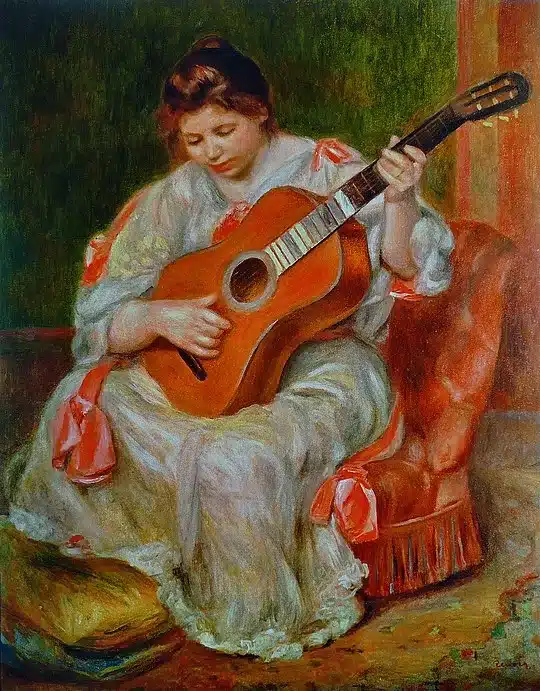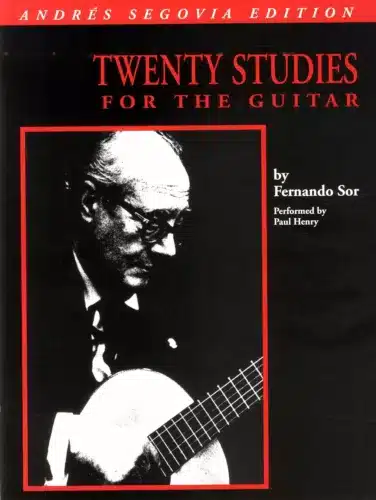In the intricate unfolding of classical guitar history, there is one key figure whose virtuosity and innovation forever altered the landscape of romantic music. Guitarist and composer Fernando Sor (1778 – 1939) was a master whose legacy resonates through time’s delicate strings, shaping the essence of melodic expression. As we embark on a musical odyssey through the enchanting realms of Sor’s compositions, we can see his profound impact on the evolution of guitar music from the Romantic era to the present day.
Imagine a world in which guitar playing serves as a vehicle for deep emotions, where each note dances gently on the precipice of passion and melancholy. This fascinating journey unveils the genius of Fernando Sor, a luminary whose compositions transcended simple notes on a staff, giving birth to the very soul of Romanticism. Join us as we unravel the enigmatic layers of Sor’s guitar work, delving into the intricate nuances that define his musical prowess and exploring the indelible mark he left on the ever-evolving texture of classical guitar music.

The life and legacy of Fernando Sor
Fernando Sor, born in 1778 in Barcelona, Spain, led a life as fascinating as his music. He began his musical journey at a young age, studying guitar and music theory. Sor’s talent immediately became evident, and soon, as did various virtuosi on other instruments, he found himself performing in prestigious venues throughout Europe.
However, it was not only his virtuosity on the guitar that distinguished Sor; it was also his innovative approach to composition. Their melodic beauty and technical complexity characterized Sor’s compositions. He perfectly blended classical forms with elements of Spanish folk music, creating a unique and captivating sound.
His compositions never wholly succumbed to the lure of Spanish folklore but, on the contrary, sought to expand into musical territory where the piano had become the main instrument. Alongside Chopin and Liszt, Sor offered pieces of varying difficulty, from etudes to concert works, but all characterized by a cosmopolitan musical quest devoted to the ideas of nineteenth-century absolute music.
Sor’s influence on romantic guitar techniques.
During the Romantic era, the guitar underwent significant changes in technique and repertoire. As one of this period’s leading figures, Fernando Sor played a crucial role in shaping these developments.
Sor’s compositions showcased new techniques that expanded the boundaries of what was previously thought possible with the instrument. His use of arpeggios, tremolo, and complex fingerings opened up new avenues of expression on the guitar.
Moreover, Sor’s emphasis on expressive manner greatly influenced future generations of guitarists. His compositions required technical skills and an understanding of phrasing and dynamics. This focus on musicality helped elevate the guitar from a mere accompaniment instrument to a solo voice capable of conveying deep emotions.
Exploring Sor’s innovations in composition
One cannot talk about Fernando Sor without acknowledging his revolutionary contribution to composition. His works spanned various genres, including sonatas, etudes (studies), variations, and divertissements.
Lyrical melodies and rich harmonies characterized Sor’s compositions. He had an innate ability to create technically challenging and emotionally evocative music. His compositions often featured intricate counterpoints, unexpected harmonic progressions, and dramatic shifts in mood.
Sor’s most significant innovation was using the guitar as a solo instrument. Before Sor, the guitar was mainly used as an accompanying instrument in chamber music ensembles. However, Sor’s compositions showcased the guitar’s full potential as a solo instrument capable of captivating audiences on its own.

Sor’s contribution to guitar pedagogy
In addition to his contributions as a composer and performer, Fernando Sor has also made significant contributions to guitar pedagogy. He recognized the need for systematic instruction on the instrument and wrote several influential method books.
Sor’s method books provided aspiring guitarists with a comprehensive technique, musicality, and interpretation guide. His approach emphasized developing a solid technical foundation while fostering creativity and expression.
Even today, many guitarists consider Sor method books essential resources for learning the instrument. His pedagogical insights continue shaping how we approach guitar teaching and learning.
Romantic aesthetics in Sor’s music
Fernando Sor’s music embodies the essence of Romanticism, an artistic movement that emphasizes emotion, individualism, and imagination. His compositions contain lush harmonies, expressive melodies, and touching musical gestures.
Sor drew inspiration from various sources, including Spanish folk music (strongly related to the guitar) and literary works written during his artistic life. He has tried to capture the depth of human emotions through his music, often infusing his compositions with longing, melancholy, or passion.
In addition, Sor’s use of rubato flexible approach to rhythm- allowed artists to permeate his music with their interpretation. This freedom of expression further enhanced the romantic aesthetic of his compositions.
Sor’s impact on future generations of guitarists
Fernando Sor’s influence extends far beyond his lifetime. His compositions and pedagogical works have had a lasting impact on future generations of guitarists.
Many famous guitarists, such as Francisco Tárrega and Andrés Segovia, were deeply influenced by Sor’s music. They performed his works and incorporated his musical techniques and ideas into their playing.
Sor’s legacy can also be seen in the continued popularity of his compositions. Guitarists worldwide continue to perform and study Sor’s music, keeping his spirit alive and ensuring his genius inspires future generations. In addition to a method, the teaching heritage consists of works 60, 31, 35, 44, 6, and 29. The complexity varies from the very simple etudes (e.g., the first ones in op., 60 – which is precisely composed of progressive etudes) and actual concert pieces, such as the sublime Etude no. 11 op.6 in E Minor (included in the Sor-Segovia collection as No. 17).
The 20 Sor-Segovia Etudes, chosen and fingered by Andrés Segovia himself and in use at conservatories worldwide, are now celebrated. Beyond the more questionable aspects, the selection is designed to aid technical development and allow students to grapple with the interpretation of relatively simple works full of exciting insights and passages.

Analyzing the most important compositions of Sor
Throughout his prolific career, Fernando Sor has composed numerous works that have become staples of the classical guitar repertoire.
One of Sor’s most famous compositions is his “Introduction and Variations on a Theme of Mozart,” Op. 9. This piece showcases Sor’s virtuosity and compositional skill as he takes Mozart’s simple theme and transforms it into a dazzling display of technical skill and musicality.
Another noteworthy work is “Grand Solo” op. 14, a tour de force for solo guitar, of which, perhaps, the most excellent interpreter was Julian Bream. This piece highlights Sor’s ability to create rich textures and powerful melodies using only one instrument. With colleagues Carulli, Giuliani, and Carcassi, Sor performed these compositions in Parisian salons, where the pursuit of virtuosity was almost a prerogative.
Other notable concert compositions include the Fantasia Elegiaca op. 59, the Sonata op. 15b, and the Introduction and Variations op. 26 and op. 28. The richness of expression, combined with harmonic elements of considerable technical difficulty, make these exceptional works that enrich the heritage of the most demanding performers.
Sor’s influence beyond the guitar world
Although Fernando Sor is best known for his contribution to classical guitar, his influence extends beyond this area.
Sor’s compositions have been arranged for various instruments, including piano, violin, and full orchestras. His music has been embraced by musicians from different disciplines who recognize its intrinsic beauty and expressive power.
The enduring appeal of Fernando Sor’s music.
More than two centuries after his birth, Fernando Sor’s music continues to captivate audiences and inspire musicians worldwide.
His compositions embody the timeless qualities of beauty, emotion, and technical brilliance. Whether it is the delicate melodies of his studies or the grandeur of his concert works, Sor’s music has a universal appeal that transcends time and place.
As we reflect on the life and legacy of Fernando Sor, we are reminded of the transformative power of music. Through his compositions, Sor left an indelible mark on the evolution of guitar music and enriched our lives with his art.
We, therefore, celebrate this extraordinary musician whose contributions continue to resonate with guitarists and music lovers alike. Let us immerse ourselves in the enchanting world of Fernando Sor and experience firsthand the magic found in every note he composed.
If you like this post, you can always donate to support my activity! One coffee is enough!

